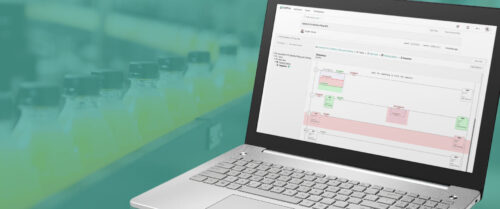Recipe Management with ISA-S88
One of the issues challenging batch manufacturers is the need to manage recipe development effectively with less dependency on the process engineering staff. By combining open standards with batching software, this need can be effectively met. The first step in reducing this dependency is using the S88 Standard for Batch Execution developed by ISA.
A simple process unit broken down into equipment modules, representing all the possible process tasks for the group.
One of the issues challenging batch manufacturers is the need to manage recipe development effectively with less dependency on the process engineering staff. By combining open standards with batching software, this need can be effectively met.
The first step in reducing this dependency is using the S88 Standard for Batch Execution developed by ISA. The S88 standard provides models that define equipment control, procedure control and activity. Key to implementing the standard is creating the ability to separate recipe development from equipment control through the use of an equipment module that includes both actual equipment (e.g., tanks, pumps, etc.) and a software representation of the same hardware that includes all the process capabilities. For a given grouping of equipment, each process task is designated as a phase against that equipment module.
In the equipment modules graphic, a simple process unit has been broken down into its equipment modules, which represent all the possible tasks for that grouping. Each box represents an organization of code in the controller designed by the process engineers that will perform the task each time it is called. Each equipment module is also designed to accept one or more parameters. With material addition for example, two parameters specifiy which material to add and how much. Under the S88 standard, this represents the equipment model .
The next step in the S88 standard is the procedural model , where the process engineer maps which equipment modules to call, in what order. This map is called an operation under the standard.
For example, the process engineer creates a procedure that supports the ability first to purge the unit, add two materials, mix, react, and then transfer out. This becomes the foundation of a recipe template which can be common to different products, but differentiated by the parameters for each phase. Under this model, the parameters or formulation can be managed independently of the operation templates. The process engineers create a family of templates to cover multiple arrangements of equipment usage. The formulators then create parameter sets. At runtime, the proper operation will be matched up with the proper formula set to create an S88 control recipe that can be executed against the equipment.
Supporting software
Batch software, such as FactoryTalk Batch from Rockwell Automation, supports the S88 model and can combine a specific operation and formulation set. The software also provides the runtime execution engine to sequence the operation for equipment controllers.
In cases where the operation map needs to be adjusted, the formulator can access tools that are used to create the operations. FactoryTalk Batch includes a graphical interface to modifiy existing operations as well as create new ones.
While this is “low level” in terms of effort, much can be completed by the formulators with little support from the process engineering group. Proper leveraging of the S88 model and batch management software provides the proper abstracting of the process layer from recipe management. This supports the formulation group’s focus on new products and the maintenance of existing products using only their own efforts.
ONLINE EXTRA More example: less dependencyRecipe management can require alot less dependency on the process engineers.
Applying this process to a real-world situation, an example would go as follows.
The customer has a very large set of final products, but many use common steps and only vary by the Bill of Materials (BOM) and/or process set points. These “common step” products are grouped into families and identified by a single S88 procedure. The formulation parameters (BOM and process set points) are managed in an independent database by the formulators. At run time, a procedure is selected and merged with a formulation set to create a control recipe unique to the selected product.
Once the procedure is selected, the default parameters are exposed for review. The operator could manually adjust these parameters from product worksheets prior to creating the control recipe. Since the formulation data is being managed in a separate database, the operator can choose which product formulation set to use from the pull down list.
Once the formulation set has been selected the parameters are exposed, and the Transfer button is used to move the database parameters over into the Procedure column. A Batch ID is entered, and the Load button is pressed to create the control recipe on the batch list.
The control recipe is now on the batch list and ready to execute. When this recipe management software is integrated with the control system running the actual process, the processing instructions transfer directly and execute the sequence of steps automatically.
In this example, basic recipe management is done by the formulation group through the use of formulation sets stored in a database.
If procedural changes are required, formulators are given access to the graphical editor that gives them the ability to create new procedures, or edit existing ones.
Based on sequential function charts, formulators can add steps, change the order, or delete steps as required.
Author Information
Michael Wood is a regional commercial manager for Rockwell Automation. He can be reached at mvwood@ra.rockwell.com .
Do you have experience and expertise with the topics mentioned in this content? You should consider contributing to our CFE Media editorial team and getting the recognition you and your company deserve. Click here to start this process.





